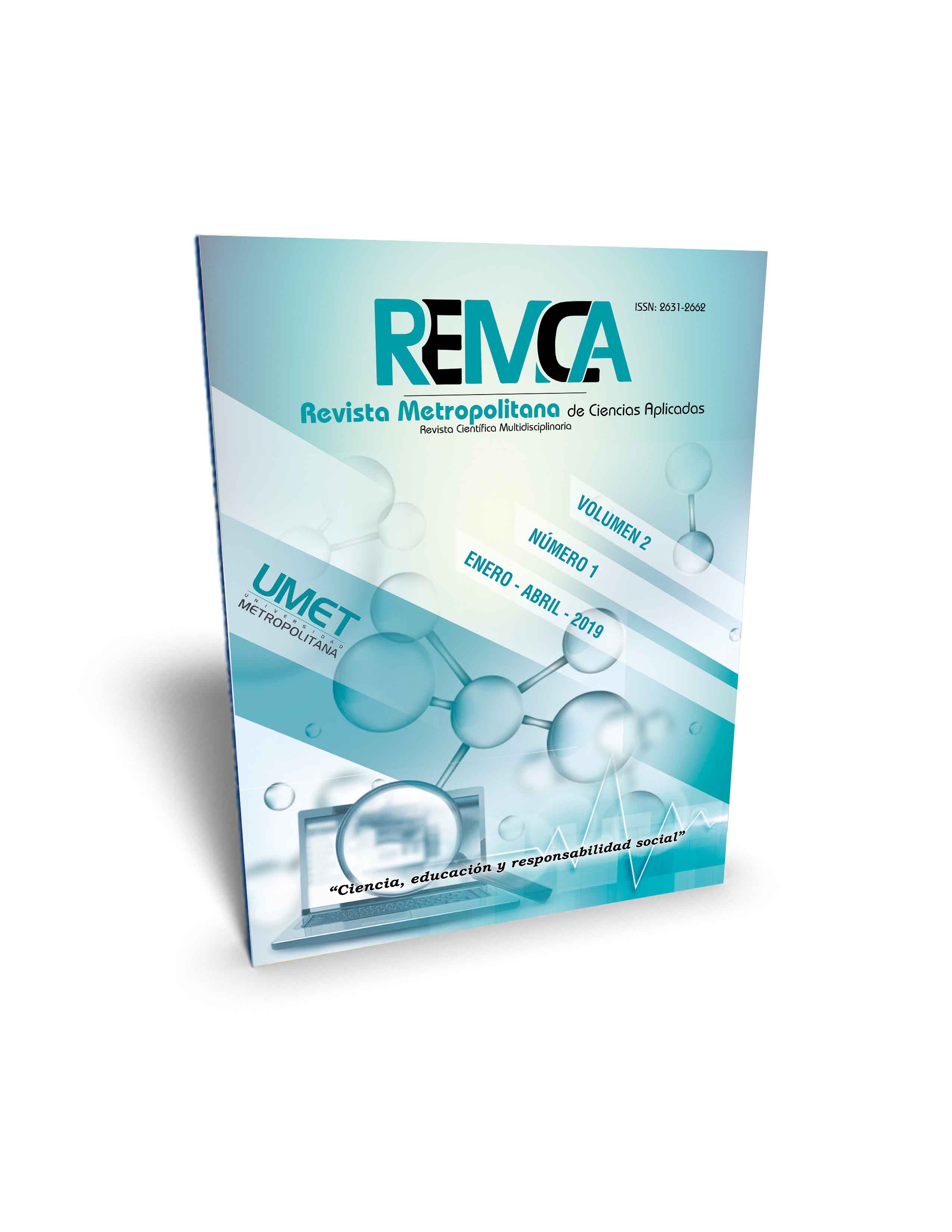Número Completo (Enero-abril)
DOI:
https://doi.org/10.62452/csk0sv11Resumen
Editorial
Carlos Xavier Espinoza Cordero
Métodos y técnicas de aprendizaje
Andy Esaú Gutiérrez Alvarado, Jinson Arturo Lynch López, Layza Madelen Mora Parrales
La redistribución del proceso de acumulación de capital en el Ecuador entre los años 2006 al 2016
Oswaldo Miño, Carlos Valencia, Eduardo Sotomayor
Efecto de la fertilización de un cultivar de Medicago Sativa l. en la en la granja Santa Inés
Ronald Andreé Vitonera Rogel, Orlin Abel Rivera Paucar, Favian Wunster Maza Valle, Ángel Roberto Sánchez Quinche
Las generaciones digitales y las aplicaciones móviles como refuerzo educativo
Irma Cárdenas García, Maritza Librada Cáceres Mesa
Niveles para el desarrollo de habilidades en la alfabetización informacional desde el Centro de Recursos para el Aprendizaje y la Investigación
Jorge Luis León González, Raúl Rodríguez Muñoz, Raquel Zamora Fonseca, Carmen Priscila Guerra Maldonado,
Learning and teaching experiences in multicultural and multilinguistic contexts
Maritza Arcia Chávez
La formación del docente de Educación Inicial, para estimular el desarrollo socio afectivo de los niños
Adalia Lisett Rojas Valladares, María Antonia Estévez Pichs, Azucena Monserrate Macías Merizalde
Principios, leyes y categoría de la pedagogía
Gilson Cabrera Carchi, Jonathan García Sellan, Michelle Arizaga Suárez
Talleres de orientación educativa para las familias de niños/as que asisten al Guagua Centro Carcelén Mágico, Quito
Ignacio García Álvarez, Azucena Monserrate Macías Merizalde, Raisa Emilia Bernal Cerza
La práctica de la evaluación del aprendizaje como generadora del Síndrome de Burnout Académico en los estudiantes de la Licenciatura en Ciencias de la Educación
Anaid Montiel Pavana, María Cruz Chong Barreiro
Las tutorías de acompañamiento, necesidad y realidad en la Universidad Metropolitana de Ecuador
Freddy Montano Rodríguez, María Lucía Brito Vallina
Algunas reflexiones sobre enfoque centrado en competencias y el desafío del docente
Miguel Ángel Díaz Olvera, Casto Hernández Flores, Andrea Bibiana Cuevas Suárez
Justicia y derecho desde la perspectiva filosófica del orden social y cultura jurídica
Alizia Agnelli Faggioli, Belkis Alida García, Yisel Muñoz Alfonso
Algunos preliminares sobre los factores socioeconómicos que determinan la aceptación de la educación superior a distancia
Salvador Vargas Ávila, Maritza Librada Cáceres Mesa
El Modo 2 de generación de conocimientos científico - tecnológicos y el vínculo universidad - sociedad en el Ecuador.
Marianela de la Caridad Morales Calatayud, Gilberto Suárez Suárez, Liorna Miyashiro Pérez
Los métodos activos de enseñanza en la educación superior: la clave de la motivación en clases
Rogelio Chou Rodríguez, Raúl López Fernández, Greicy de la Caridad Rodríguez Crespo, Osvaldo Domínguez Junco
Evaluación de la calidad percibida en los servicios de la UEB No 16 Servicios Integrales Cienfuegos
Michel Feitó Cespón, Gretel Martínez Curbelo
El turismo ecuatoriano como una actividad enriquecedora para una cultura de paz
Alicia Ramírez de Castillo, Fernando José Castillo
Cuantificación del valor económico del CO2 en una plantación de Theobroma cacao L
Salomón Barrezueta-Unda, Pamela Ríos-Carrión, Cesar Quezada-Abad, Wilmer Moreira-Blacio
Evaluación de la efectividad de un método de recepción no detallada en la Droguería Cienfuegos
Michael Feitó Cespón, Mailet Hernández Cruz, Yohan Hernández Sánchez
Alternativas nutricionales eficientes en banano orgánico en la provincia El Oro, Ecuador
Edgar Lenin Valverde Fonseca, Rigoberto Miguel García Batista, Alexander Moreno Herrera, Alejandro Rafael Socorro Castro
Diversidad y educación inclusiva en las universidades: Cambiar estigmas y ordenar conceptos
José Luis Gil Álvarez, Mabel Morales Cruz
La práctica universitaria inclusiva de la Universidad Metropolitana de Ecuador: una alternativa desde el bienestar estudiantil
Julio César Jiménez Correa, Yaquelín Alfonso Moreira
El conocimiento y la innovación como ente dinamizador del desarrollo local
Yusniel Tartabull Contreras, Niurka García Maró
Descargas
Descargas
Publicado
Número
Sección
Licencia
Derechos de autor 2019 Jorge Luis León-González (Autor/a)

Esta obra está bajo una licencia internacional Creative Commons Atribución-NoComercial-CompartirIgual 4.0.
Los autores que publican en la Revista Metropolitana de Ciencias Aplicadas (REMCA), están de acuerdo con los siguientes términos:
1. Derechos de Autor
Los autores conservan los derechos de autor sobre sus trabajos sin restricciones. Los autores otorgan a la revista el derecho de primera publicación. Para ello, ceden a la revista, de forma no exclusiva, los derechos de explotación (reproducción, distribución, comunicación pública y transformación). Los autores pueden establecer otros acuerdos adicionales para la distribución no exclusiva de la versión de la obra publicada en la revista, siempre que exista un reconocimiento de su publicación inicial en esta revista.
© Los autores.
2. Licencia
Los trabajos se publican en la revista bajo la licencia de Atribución-NoComercial-CompartirIgual 4.0 Internacional de Creative Commons (CC BY-NC-SA 4.0). Los términos se pueden consultar en: https://creativecommons.org/licenses/by-nc-sa/4.0/deed.es
Esta licencia permite:
- Compartir: copiar y redistribuir el material en cualquier medio o formato.
- Adaptar: remezclar, transformar y crear a partir del material.
Bajo los siguientes términos:
- Atribución: ha de reconocer la autoría de manera apropiada, proporcionar un enlace a la licencia e indicar si se ha hecho algún cambio. Puede hacerlo de cualquier manera razonable, pero no de forma tal que sugiera que el licenciador le da soporte o patrocina el uso que se hace.
- NoComercial: no puede utilizar el material para finalidades comerciales.
- CompartirIgual: si remezcla, transforma o crea a partir del material, debe difundir su creación con la misma licencia que la obra original.
No hay restricciones adicionales. No puede aplicar términos legales ni medidas tecnológicas que restrinjan legalmente a otros hacer cualquier cosa que la licencia permita.




